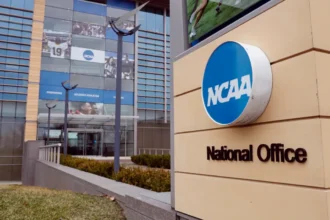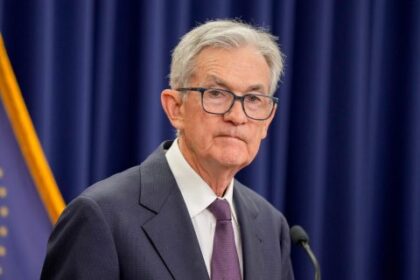More than 1,400 flights cancelled as US air-traffic cuts enter second day
More than 1,400 flights to, from or within the United States were cancelled on Saturday, as the federal government’s extended shutdown pushed the nation’s air-transportation system into a new phase of disruption. Meanwhile nearly 6,000 flights were delayed — a drop from more than 7,000 the prior day — according to flight-tracking data. As the shutdown enters its 39th day and counting, the impact is no longer limited to furloughed workers and food-aid disruptions: it has reached the skies.
The FAA announced earlier in the week that it would reduce air-travel capacity by up to 10 percent at 40 of the nation’s busiest airports in order to maintain safety amid growing fatigue and staffing challenges within air-traffic-control towers, as federal workers continue to work without pay. The cuts are intended to apply gradually: starting with a 4 percent reduction, increasing to perhaps 6 percent by mid-November and as high as 10 percent by mid-month — unless the shutdown ends.
Safety concerns trigger capacity reductions
The FAA’s decision reflects serious concern that air-traffic controllers — required as “essential” workers despite the shutdown — are experiencing rising fatigue, increased sick-leave rates and second-job pressures. The TSA (Transportation Security Administration), which oversees airport screening, is facing similar strain: its workforce of around 64,000 agents includes many unpaid staff and those working under duress.
Several major airport hubs are already bearing the brunt. At Newark Liberty International Airport, arrivals were delayed on average more than four hours and departures nearly 90 minutes. At John F. Kennedy International Airport and LaGuardia Airport in New York, delays approached three hours for some flights. The airports identified with the highest number of cancellations include Charlotte Douglas International Airport, Newark and Chicago O’Hare International Airport.
Private jets are not exempt. The FAA has required that private-aviation traffic be diverted from the busiest airports to smaller fields so that controllers can focus on commercial flights. According to the Transport Secretary’s update on social media, private‐jet volume at high-traffic airports has been reduced so that controllers can manage the larger public-flight load.
Widening impacts and traveller frustrations
For travellers, the consequences are immediate and practical. Families travelling for upcoming holidays are facing uncertainty, long lines and significant delays even as airports prepare for one of the busiest periods of the year: the Thanksgiving holiday season is just weeks away. Airline spokespeople have urged congressional leaders to resolve the shutdown immediately, warning that the effects will only worsen.
The ripple effects also extend to other sectors of the economy. Airports depend on predictable scheduling — for ground operations, rental cars, concessions and staffing. Airlines, already under cost pressure, must scramble to rebook passengers, adjust aircraft rotations and manage crew rest requirements. Moreover, disruption at one major hub often cascades to other airports nationwide.
Political stalemate keeps pressure mounting
Political negotiations continue in Washington, but both parties remain deadlocked. Democratic lawmakers proposed passing a short-term funding bill combined with a one-year extension of health‐care subsidies. Republicans rejected the proposal, leaving the shutdown unresolved.
Meanwhile, the consequences continue to mount. What began as a political standoff has spilled into everyday life — now threatening the reliability of the nation’s air-travel infrastructure. For federal workers who have gone unpaid, for passengers whose travel plans hang in the balance, and for an industry that relies on stability, the cost is escalating.
Long-term risks for aviation safety and operations
While the FAA emphasizes that safety is its top priority, reducing capacity at major airports is an extraordinary step. Air travel in the U.S. is built on finely balanced scheduling, with controllers managing thousands of movements each day. Lower staffing levels, fatigue and disruptions to normal rotations can increase risk. The decision to cut flights is a preventive measure to ensure the system does not exceed safe operational limits.
For airlines, supply-chain disruption, gate allocation issues and maintenance scheduling are all being affected. For passengers, longer waits, increased cancellations and unpredictable travel experience have become the new norm. With the holiday travel season looming, the timing could not be worse.
What comes next?
If the shutdown continues, the FAA’s cuts will deepen — with the possibility of up to 10 percent capacity reduction across major airports by mid-November. That could translate into tens of thousands of cancellations and even larger delays, especially when a single cancelled flight can delay dozens of others. Private-jet traffic may also face further restrictions.
Airlines are preparing contingency plans, but their ability to do so is limited given the uncertainty. Airlines and airports may also begin to cancel flights proactively rather than manage day-of disruptions, in order to avoid excessive costs and reputational damage.
Broader implications
This episode underscores how federal shutdowns — typically seen as budgetary stalemates — can quickly cascade into critical infrastructure and public-safety domains. When essential workers go unpaid and staffing is unreliable, agencies must take extraordinary mitigating measures.
The aviation sector — with its tight tolerances for timing, staffing and coordination — is particularly vulnerable. In this sense, the cancellation wave is a canary in the coal mine for other sectors that rely on federal workforce continuity. As political leaders assess their next steps, the question for the public becomes: how many more cancellations and delays will it take for the standoff to end?
Final thoughts
Travellers, airline staff and airport operators are bearing the brunt of a crisis of governance. The cancellation spree that began this weekend is more than an inconvenience — it is a symptom of systemic risk in an era of prolonged federal gridlock. As the college-application season, Thanksgiving travel and major holiday movements approach, the pressure will only intensify.
For now, delays will ripple through schedules, passenger frustration will mount, and the aviation industry’s capacity to absorb further disruption will be tested. Whether the political impasse breaks or deepens, the skies have become another front in the fallout of a government shutdown — and the cost may be measured not only in cancelled flights, but in lost confidence in one of the world’s most robust air-travel systems.











